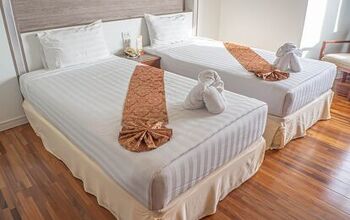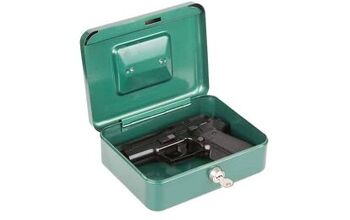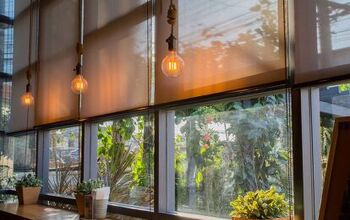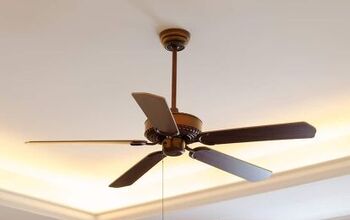10 Decking Alternatives

Before composite decking entered the market in the late 1990s, there were few alternatives to wood decking. Up until that point, pressure-treated wood was the only genuine alternative for decking.
It should come as no surprise that composite decking and many other wood decking alternatives are now very well-liked due to their affordability, low care needs, durability, and attractive appearance. These days, many homeowners choose it for good reason because it’s a feasible option.
Use this list of alternatives to wood decking if you’re replacing your decking or creating a new deck. After our selection, we lay out a lengthy selection of goods you can check out as examples.
1. Interlocking Garage Flooring Tiles
These Grid-Loc floor tiles are made to resist the most punishing conditions, particularly those found in garages. As a result, they are built to support very heavy rolling vehicle loads. They can withstand potentially harmful chemicals as well as grease, oil, petroleum products, and other substances.
Installing them is simple since you simply snap together neighboring garage floor tiles to create a long-lasting garage floor. They are slip-resistant, stain-resistant, and UV stable. With a 12-year warranty, they offer premium garage tile substitutes.
2. Trex
Trex decking is a highly well-liked alternative that is synonymous with composite decking. Wide variety of hues, has extremely minimal maintenance requirements and is attractive all year long. Composite decking material gives your deck a long lifespan in challenging settings.
The Trex Enhance Basics range is created to compete with the price of pressure-treated hardwood decking and climbs up from there when comparing the price of Trex to wood.
The increased initial investment upon installation, according to Trex, eliminates the expense and work needed to maintain a wood deck annually. A Trex deck can end up costing less in the long term.
3. Vinyl Decking
There are vinyl decking assets available for external use, much like your low-cost vinyl tiles or floorboards in the kitchen. Simple plywood decks can be covered with Econodek’s membrane to provide a waterproof surface, and a complete DIY kit for a 12′ x 12′ deck will cost you about $1500.
Of course, the cost will increase if you decide to hire a professional installer. Similar to anything created with vinyl, vinyl has benefits like resistance to wear, longevity, and water resistance.
The vinyl substance is additionally resistant to sun damage and UV radiation. An alternate brand called VersaDry advertises a surface that is cooler in the sun, a comfort coating that absorbs shock, and stain and scratch resistance.
Including extra choices like no-fade colorfast from producers like EZ Deck, Kroy, and Dream Deck. Without factoring in substructure, prices range from $13 to $22 per square foot.
4. Rubber Paver Tiles
This microporous granular substance is used to create the interlocking rubber paver. High-density rubber was used to create the granular substance.
As a result, it is incredibly strong, wear-resistant, and has excellent flexibility, making it perfect and comfortable for the foot.
The paver is ideal for outdoor use, permeable to water, and non-slip even when wet. It has an interlocking design that requires no adhesive to install. As a result, installing them is fairly simple.
5. Aluminum Decking
Depending on the outcomes you’re after, aluminum might be the best option given that its material cost averages around $10 per square foot. Aluminum offers a durable deck that requires little maintenance and upkeep because it is rust and rot-free.
Aluminum is slightly more expensive than wood, but its longer lifespan eventually compensates for itself. Aluminum is thought to be the most resilient decking material available since it is resistant to rot, mold, termites, and rust.
The finish is equally pleasing and has unmatched strength and longevity. It is also simple to install because of its lightweight characteristics.
6. Vinyl Tiles
Wood tiles are a practical solution to remodel that old pad with a new and modern style if you are starting with a concrete slab or patio. These tiles are specially made to fit with an existing slab and are available in hardwood and basic wood types.
Unlike a typical plank installation, durable, rot- and mold-resistant, as well as pest-resistant wood tiles produce an attractive completed design. Without requiring a full deck installation, this kind of deck delivers a distinctive style when set up in a contrasting pattern.
The tiles, which come in a variety of finishes, are robust and weatherproof, adding beauty to any landscape. Many old concrete slabs start to chip, crack, or just seem worn, and occasionally they still have an unattractive old coat of paint on them.
With a considerably simpler application method, adding wood tiles creates the appearance of a completely new deck. They might cost more than $18 per square foot, depending on the material. Tigerwood tiles are a lovely choice and are generally accessible.
7. PVC Decking
Doesn’t the phrase “Plastic Decking” seem a little strange? It does exist, though, and many homeowners discover that this style of decking best matches their requirements.
It is robust, won’t splinter, and is rather quiet. It is an excellent choice for DIY projects because it is extremely simple to install.
Since it is made of PVC, this kind of decking is strong enough to survive the elements and is pest- and rot-free.
In order to assure hardness, tongue and groove installation can be placed over already-existing surfaces. At $4 per board, the price is slightly less expensive than some other materials, such as most products made of plastic.
8. Bamboo Decking
Given the strength of its strands, the substance inside, and its capacity to endure moisture, bamboo has taken the globe by storm and been incorporated into various things.
Due to its extraordinarily soft nature—even more so than cotton—the pulp within the bamboo has been extracted and used to produce cushions and quilt batting.
Bamboo decking comes in two different varieties: woven fibers and non-woven fibers. Undoubtedly, the woven type is the stronger of the two. Unquestionably beautiful by nature, bamboo can make a long-lasting deck in many climes if properly cared for.
Any deck made of wood will require maintenance to keep it looking its best. Bamboo is no exception and requires sealing, staining, or coloring. Applying a coat of sealer to it in its natural form is not advised because it will fade with time.
Bamboo won’t grow well in places with a lot of rain, flooding, puddling, or marshy terrain. It will degrade and support mold. Although bamboo in its woven form is significantly more resistant to this issue, it is still not waterproof. Bamboo will work effectively for you in typical humid places and hot climes.
9. Marine Flooring Composite Decking Synthetic Sheet
EVA (Ethylene-Vinyl Acetate) components of the highest grade are used to make this decking material. Both elastic and environmentally friendly, these fabrics.
The EVA floor has strong seismic resistance, chemical resistance, buffering, moisture resistance, and non-absorbent properties. It provides a solid selection for boat building. This is due to the fact that they frequently give boats an effective non-slip surface in both dry and wet situations.
10. Interlocking Grass Deck Tiles
These synthetic deck tiles include nine interlocking 1×1-inch grass deck tiles with a 1.5-inch pile height. High-quality, long-lasting, and low-maintenance grass is available.
No fertilizers, pesticides, or mowing are required. As a result, the grass deck tiles can add elegance to your patio, rooftop, yard, or deck. Additionally, it has a fantastic drainage system that makes cleaning it simple. The materials employed are recyclable and environmentally friendly.
Both children and pets can use the latter because it is non-toxic. It is appropriate for outdoor events including parties, picnics, and camping.
What is Bad About Composite Decking?
Contrary to wood decks, it actually moves more suddenly. While some composite decking won’t budge an inch, others have been observed to bend, twist, bow, shrink, swell, and exhibit other characteristics that are unheard of even with wood.
However, composite decking is actually the closest to perfect that you can get. The issue doesn’t lie within the quality of material but rather the price point. Composite can cost over $13 per square foot, making it an unlikely option for anyone on a budget.
Is Composite Decking Worth the Money?
Compared to wood, composite decking is unquestionably more expensive. However, it is prized for its remarkable likeness to real wood and effectiveness, making it a great option for decking.
Because it is simpler to clean and maintain, it will endure long enough to be passed on to the next homeowner at the same value.
Does Composite Decking Scratch Easily?
Trex or any other composite decking won’t scrape or scuff readily, unlike painted wood decks. Additionally, it is very scratch-resistant. This type of decking also resists fading, stains, mold, and mildew in addition to the foregoing.
So, feel free to set any tables, and decor items on it without worrying about them affecting the finishing of your decking. You can have your ideal decor items and keep your deck looking brand new.
Why Choose An Alternative to Composite Decking?
As stated above, composite decking is quite a bit more expensive than other types of decking. This option makes it less feasible for most families, as not everyone has thousands of dollars to spend on renovating their deck.
However, there are some great alternatives that don’t cost as much. While these alternatives may have a few more cons than composite decking, they are a great replacement.
Additionally, you can put finishing on your alternative decking to make it scratch and scuff-resistant. That way, it’s just like having composite decking without the price point.

Heather is a passionate writer who loves anything DIY. Growing up, she learned everything from home repairs to design, and wants to share her tips with you. When she's not writing, she's usually hiking or searching for her next DIY project.
More by Heather Robbins



























